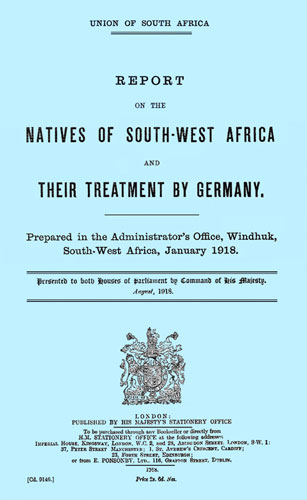Paper libraries in the digital age?

 Jan-Bart Gewald is a historian specialized in the social history of Africa. He is Professor of African History and Director of the African Studies Centre Leiden as of 1 September 2017.
Jan-Bart Gewald is a historian specialized in the social history of Africa. He is Professor of African History and Director of the African Studies Centre Leiden as of 1 September 2017.
'Economic, technological and political forces are fundamentally reshaping how knowledge is produced and consumed. Much as clay tablets and bone gave way to papyrus and parchment, paper is now yielding to bitstreams. In turn, libraries are rebalancing their collections away from physical volumes towards online resources, where a small number of remote providers dominate storage and delivery, and effectively govern the terms of access for all. For many, printed books and periodicals are fast becoming reminders of things past.
Glenn Tiffert, 'Peering down the memory hole: history, censorship and the digital turn'.
Throughout time, and more often than not, governments, political movements and religious institutions have sought to crush and obliterate the bodies and thoughts of their opponents. One way of seeking to do this in literate societies is by determining what people may or may not read. Often this happens in dramatic and not to be misunderstood ritual destructions which includes the burning of books and libraries, and occasionally people. From the destruction of the library of Alexandria, through Heinrich Heine and the later book burnings of the Nazis, to the devastation of the library of the Royal Tropical Institute in Amsterdam and the burning of libraries by students in South Africa, people have sought to eradicate forever the words, thoughts and sentiments of those whom they believe may oppose them.
Online policing
Recently it came to light that the government of the People’s Republic of China actively and consciously redacts what can be read and studied by academics and students by determining and policing what is made available in online repositories of academic journals. Glenn Tiffert, a researcher of the University of Michigan, stumbled upon this issue. Anxious to clear up a cluttered office, and believing that (as they would be available online) he no longer needed hard copies of his academic journals printed in China in the 1950s, he double-checked to see if all articles within his journals were indeed available in the online repositories. To his dismay he discovered that although the journals were listed, selected articles were absent. In following up on this, Tiffert was able to demonstrate that this was not mere oversight or shoddy archiving, but part of an active, extensive and selective policy to keep certain articles, authors, and thoughts out of existence. If it were not for the continued existence of hard copy paper prints of these journals in libraries beyond the control of the Chinese government, it would be virtually impossible to know what had been written let alone prove that this had taken place. The sterling work conducted by Glenn Tiffert in exposing this sad state of affairs, would not have been possible if he did not have access to hard copy print copies of the journals in question. (Glenn Tiffert, 'Peering down the memory hole').
Eyewitness accounts
Between 1904 and 1908, military forces of Imperial Germany perpetrated the first genocide of the Twentieth Century. This occurred in German South West Africa (GSWA), present day Namibia, a territory which was occupied by the forces of the Union of South Africa in the First World War. Arriving in the conquered country, South African officials were confronted with countless eyewitness accounts of the terrors that had occurred, and, upon consulting the extraordinarily detailed archives of the German colonial administration, it became abundantly clear that these reports were not the figment of over-excited imaginations, but were based on documented and verifiable fact.
The ‘Blue Book’
Among the new South African administrators in the territory was a young Major, T.L. O’Reilly, who came to be appointed as the Military Magistrate of Omaruru. Here, O’Reilly developed a close relationship with local Herero leaders, from whom he heard accounts which, in his own words were, “quite enough to make ones hair stiffen”. In 1918, as the First World War came to an end, O’Reilly was approached with a request that “a full historical account should be prepared showing the treatment received by the native races in [GSWA]”. O’Reilly’s response was enthusiastic, “I am as keen as mustard on it – I have been doing quite a lot of graft locally in that direction and even if they change their minds, I intend going into the matter privately”. Within a few months O’Reilly completed his work which was submitted to parliament as the Report on the natives of South West Africa and their treatment by Germany, and which has become known in southern African history as the ‘Blue Book’.
Annihilating all copies
The most powerful evidence in the Blue Book are the voluntary statements taken under oath of no less than 50 African witnesses. This testimony was combined with numerous German colonial documents to produce an indictment of German colonial policy in German South West Africa. However, in 1926, within ten years of being printed, it was withdrawn from the public domain and orders were issued for the annihilation of all copies of the Blue Book within the British Empire. The Blue Book was removed from circulation as an official act that aimed to ensure that African voices were forgotten and their written statements actively erased so as to consciously remove a critical account of the German colonial period of Namibian history in the interests of an alliance between German settlers and the South African government. By and large, the Blue Book ceased to exist within the public domain in the British Empire. Thankfully stray copies continued to exist in libraries beyond the Empire; the American author Thomas Pynchon stumbled upon the Blue Book in the Seattle public library and was inspired to write his breath-taking novels V and Gravity’s Rainbow, which drew heavily from what had been detailed in the Blue Book (also see: Peyton Meigs Joyce, (Re)Visions Of Genocide: Narratives Of Genocide In Thomas Pynchon’s V. And Gravity’s Rainbow, MA Thesis in English, Georgetown University, 2009). Although the published Blue Book ceased to exist in southern Africa, the original paper manuscript continued to exist in what became the National Archives of Namibia. In the 1990s Jeremy Silvester and I chanced upon this manuscript, which allowed us to edit and republish the Blue Book (Words cannot be found: German colonial rule in Namibia: an annotated reprint of the 1918 Blue Book. Leiden: Brill, 2003; open access).
Existing virtually forever?
Many argue that digitalizing paper documents and books will ensure the continued existence of their contents virtually forever, or at least for as long as people can access and read the digitised material. However, as Tiffert has shown, the digital era provides the powers that be with endless opportunities to censor and edit materials, without researchers ever becoming any the wiser. Paper may not be as resilient and enduring as clay tablets, which only come to be better preserved when burnt, but paper, if properly preserved can always be read, even if it is only with the light of a candle. The library of the African Studies Centre Leiden contains books and documents that are unique in the world. Researchers flock to the library from around the world precisely because they exist in Leiden. By all means, digitize them and make them available electronically, but always ensure that the original hard copy is preserved, even if it is only a lowly piece of paper.
This is the first post of the new ASCL Africanist Blog. Would you like to stay updated on new blog posts? Subscribe here!


